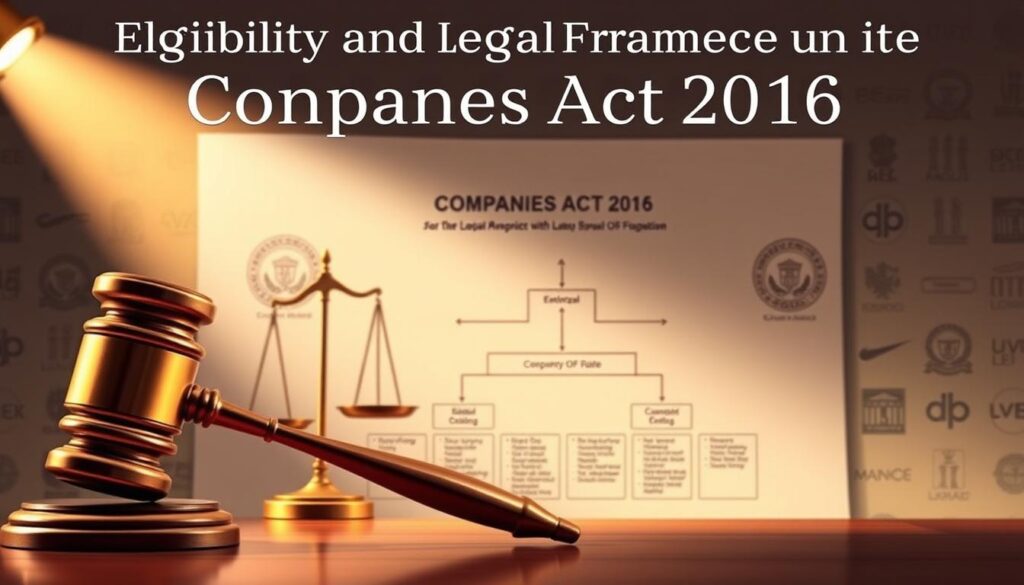This short guide gives Malaysian company leaders a clear, friendly overview of the steps that matter when removing an entity from the register under the Companies Act 2016.
We outline when to pause business activity, settle obligations, and organise records so the deregistration process runs smoothly. You will see how Inland Revenue Board checks can affect whether deregistration is practical now or whether a Members’ Voluntary Liquidation is the safer route.
Expect plain checklists on documents, proof of settlement, SSM steps, and likely timelines. We point out common missteps and when professional services and a company secretary add value.
Key Takeaways
- Plan timelines and costs early to match SSM sequencing and publication rules.
- Confirm company status: no assets, liabilities, and shareholder consent are vital.
- Inland Revenue Board involvement can extend the process and change the best route.
- Keep accurate records and proofs of settlement for at least seven years after dissolution.
- Coordinate with your company secretary and tax agent to avoid filing mistakes.
- Choose MVL if solvent winding down and tax clearance will delay or complicate deregistration.
Before You Begin: Strike-Off vs MVL and Why Tax Clearance Matters Now
Choosing the right closure path depends on eligibility, costs, and how quickly you need the company removed from the register. Start by confirming whether the business has fully stopped operation and if there are no assets or liabilities to settle.
Quick contrast: Striking off under the companies act 2016 vs Members’ Voluntary Liquidation
Strike-off is a cost-effective option when a company has ceased activity, owns no assets, and has shareholder approval. It typically takes about six months and suits companies that meet the SSM criteria.
Members’ Voluntary Liquidation (MVL) fits solvent companies that need a formal wind-down. A liquidator manages asset distribution and statutory steps. MVL often takes a year or more, with dissolution following the final meeting within roughly three months.
Why Inland Revenue Board tax clearance can determine your timeline and costs
The Inland Revenue Board’s confirmation often becomes the pacing item, especially in MVL. If the company once carried on business, authorities may require you to obtain tax confirmations before acceptance of an application.
- Weigh cheaper strike-off services against the control and certainty an MVL provides.
- Keep orderly records for at least seven years after dissolution to reduce delays and reinstate risk.
- Plan pre-application steps: stop operation, settle balances, and align with your company secretary and liquidator.
Eligibility and Legal Framework under the Companies Act 2016
Start by checking the legal tests that let the Registrar remove a company from the register. The rules are set out in the Companies Act 2016 and guide who may apply and who cannot.

Key provisions: Sections 549(a), 550, 551, and 555 explained
Section 549(a) gives the Registrar discretion to act when there is reason to believe a company is not in operation.
Section 550 lets a director, shareholder, or liquidator apply to request that action. Section 551 sets notice and objection timelines. Section 555 allows court reinstatement within seven years.
Who can apply and who cannot
A company must be dormant, with no assets or liabilities. Holding companies, guarantor corporations, and entities still trading are not eligible.
Disqualifiers to fix first
- Any ongoing legal proceedings.
- Outstanding charges, unpaid taxes, or other liabilities.
- Unsettled penalties or compounds and overdue filings.
- Mismatched director details at the register.
Resolve these blockers, prepare a shareholders’ resolution and up‑to‑date management accounts showing zero assets liabilities. Doing so reduces rejection risk under the act 2016.
How to Obtain Tax Clearance Before Strike-Off: What Every Director Should Know
Start the closure journey by confirming your company’s final financial position and filing status. This step makes the subsequent application process predictable.
Prerequisites
Your company must show zero assets and liabilities in the latest management accounts. Close bank accounts, clear penalties or compounds, and ensure no charges or legal proceedings remain.
Documents for LHDN
Prepare management accounts, proof of settlement or disposal, cessation minutes with the cessation date, and updated statutory records. For Sdn Bhd entities, add bank closure letters and shareholders’ approvals.
Filing the request and common delays
Submit the evidence pack to LHDN and expect queries. Common holds include unreported income, unresolved prior-year assessments, or distributions treated as dividends. These slow the review and the related SSM application.
Work with advisors
Engage your tax agent to reconcile ledgers and your company secretary to check register details. Timed coordination of the clearance and SSM steps reduces rejection risk and keeps the overall process smooth.
Aligning Tax Clearance with the SSM Strike-Off Application
Syncing financial confirmations with the SSM application helps avoid last-minute objections. Complete reconciliations first, then prepare the SSM paperwork so the process flows in the right order.

Shareholders’ resolution, Schedule B, and Registrar updates
Include a signed shareholders’ resolution approving the application and the Schedule B declaration under Practice Directive 1/2017. Pay the RM100 fee at SSM and attach evidence of any attempts to contact untraceable shareholders, such as registered post receipts.
Notices, objections, and Federal Gazette publication
The Registrar may serve a notice giving a 30-day window for objection. Objections can be raised if the company still carries on business, is in receivership or liquidation, or faces creditor claims and legal proceedings.
- Sequence paperwork: clear finances first, then file the application with Schedule B and the resolution.
- Ensure the name register shows no outstanding charges and director details are updated.
- Your company secretary can confirm filings and the correct submission channel.
- Keep copies of the application, notices, and Gazette publication for banks or service providers.
Director Responsibilities, Risks, and Post-Strike-Off Realities
Even after a company is removed, its leaders can still face claims tied to past conduct.
Personal exposure remains possible. If misconduct, unpaid liabilities, or penalties existed before removal, claims may be made against officers or members.
Retention, reinstatement, and statutory windows
Keep accurate records for at least seven years. Documents prove decisions and protect against future claims.
Under Section 555, an aggrieved party may apply to reinstate company status within seven years. If restored, legal continuity is as if the removal never happened.
When liquidation is the safer path
If capital or assets remain, opt for liquidation rather than removal. A liquidator will realise assets, settle creditors, and distribute capital correctly.
| Issue | Risk if removed | Recommended action |
|---|---|---|
| Unsettled liabilities | Enforcement against officers | Resolve or choose liquidation |
| Remaining capital | Improper distribution risk | Appoint a liquidator |
| Pending legal proceedings | Application refusal or later claims | Settle or disclose before closure |
- Plan for possible enforcement of liabilities after dissolution.
- Keep records accessible within seven years in case someone seeks to reinstate company status.
- Use professional services to confirm that the company must be removed and to reduce post‑closure risk.
Conclusion
A careful final review prevents needless delays in the closure process.
Make sure the company meets SSM requirements: a signed shareholders’ resolution, up‑to‑date name register entries, management accounts showing nil assets and liabilities, and Schedule B with the RM100 fee.
Obtain tax confirmation, clear charges and fees, then file the application and monitor the 30‑day notice and Gazette publication dates from the registrar.
If capital remains, use liquidation and appoint a liquidator to protect members and avoid later enforcement of liabilities. Keep copies of filings so you can reinstate company status under Section 555 if required.
Plan well, use professional services when needed, and close with confidence.
FAQ
What is the difference between striking off a company under the Companies Act 2016 and carrying out a Members’ Voluntary Liquidation (MVL)?
Striking off removes a company from the register when it has no assets, liabilities, or ongoing business. MVL is a formal process used when a solvent company wants to wind up, distribute capital to members and appoint a liquidator to handle claims, tax matters and final distributions. MVL gives stronger protection for directors and shareholders where assets or creditors remain.
Why does obtaining clearance from the Inland Revenue Board affect the timeline and cost of removing a company from the register?
Clearance from the Inland Revenue Board shows there are no outstanding assessments or liabilities that would survive dissolution. Without this confirmation, the Registrar of Companies may refuse the strike-off or the company may face later tax assessments and penalties. Getting the tax confirmation first avoids delays, additional costs and possible reinstatement procedures.
Which sections of the Companies Act 2016 are most relevant when planning a strike-off?
Key provisions include sections relating to application for strike-off, objections and publication. Directors should pay attention to sections that set out the procedural steps and the Registrar’s powers to strike a name from the register, as these affect notices, objections and timing for removal.
Who may apply to have a company struck off the register, and who cannot?
A company’s directors or authorized officers normally apply for strike-off when the company has ceased operations. Companies that remain in business, those acting as holding or guarantor companies with ongoing obligations, or those subject to court proceedings and unresolved charges should not apply. Companies with outstanding statutory obligations must resolve those first.
What issues will disqualify a company from being struck off immediately?
Active legal proceedings, unresolved government liabilities, unpaid statutory penalties, existing charges registered against company assets, and unpaid employee entitlements typically prevent immediate strike-off. These matters must be cleared or otherwise legally addressed before the Registrar will remove the company.
What are the usual prerequisites before applying for tax confirmation and strike-off?
The company should have no remaining assets or liabilities, finalised and lodged statutory filings, closed or settled bank accounts, and completed cessation of business activities. Directors should ensure statutory records and financial statements reflect the company’s inactive status.
Which documents should I prepare for the Inland Revenue Board when requesting confirmation?
Prepare final management accounts, evidence of settled liabilities, bank closure or statements showing zero balances, minutes or resolutions confirming cessation, and any documents showing distributions or final payments. Clear, complete records speed up verification.
How do I file a request with the Inland Revenue Board and how long does it take?
Submit the required forms and supporting documents to the local Inland Revenue office or via an authorized tax agent. Processing times vary by office and complexity, but you should expect several weeks. Follow up through official contact points and keep copies of submissions.
What common issues delay the tax verification process?
Unreported income, unresolved prior-year assessments, undeclared dividend distributions, discrepancies in payroll or GST filings, and missing documentation often trigger queries. Addressing these proactively reduces delays.
How can a tax agent and company secretary help during this process?
A tax agent can prepare and submit the clearance request, handle follow-up with the revenue authority, and resolve outstanding assessments. The company secretary ensures statutory records are accurate, prepares the Schedule B declaration for the Registrar and coordinates shareholder resolutions and publications.
How do I align the revenue confirmation with the Companies Commission strike-off application?
Obtain the revenue confirmation before filing with the Companies Commission. Then lodge the strike-off application with supporting shareholder resolution, the Schedule B declaration, and the revenue document. Ensure the Registrar’s records, including the register of members and charges, are updated.
What notices and publications take place after I apply to the Registrar for strike-off?
The Registrar will publish notices and allow a period for objections. Notices may appear in the official gazette or the Commission’s publication. If no valid objections arise, the company will be removed from the register after the statutory waiting period.
What personal risks do directors face if a company is struck off with outstanding matters?
Directors can face enforcement actions, personal liability for unpaid duties or misconduct, and penalties if statutory obligations are ignored. Creditors or authorities can pursue claims even after dissolution in many circumstances.
How long must company records be kept after dissolution and can a struck-off company be reinstated?
Directors should retain corporate and financial records for statutory periods—often seven years—since authorities or creditors may require them. Reinstatement is possible in many jurisdictions within set timeframes to allow claims or investigations to proceed.
When is MVL a better option than a simple strike-off?
MVL is preferable if the company has distributable capital, remaining assets, or potential creditor claims that need formal handling. The liquidator manages asset realisation, creditor proofs and final distributions, offering clearer protection for directors and members.

